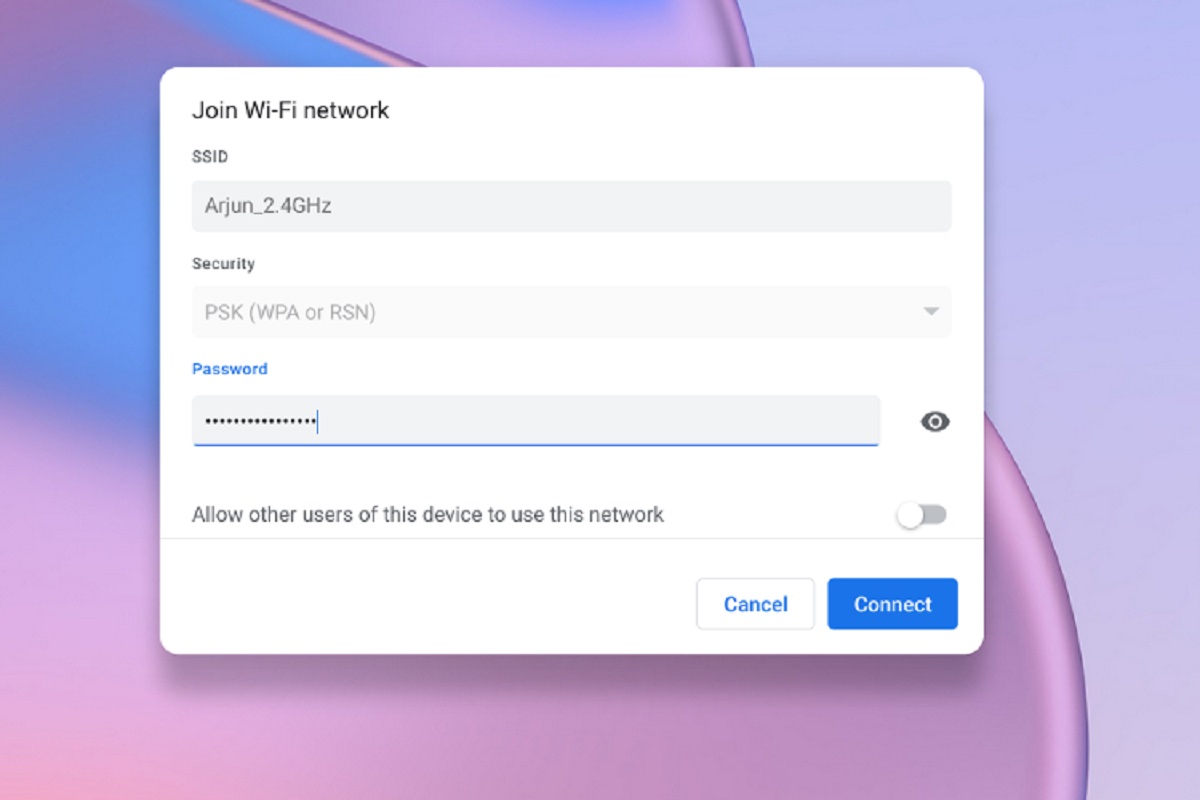Introduction
When it comes to browsing the web, Google Chrome stands out as one of the most popular and user-friendly web browsers. Its seamless integration with various devices and platforms makes it a go-to choice for many users. One of the convenient features offered by Chrome is the ability to save and manage passwords for different websites and online accounts. This feature not only saves time but also enhances security by allowing users to create complex and unique passwords for each site without the hassle of remembering them.
However, what happens when you need to access your saved passwords on a different computer? Whether you're switching to a new device or simply need to access your passwords on another computer, the process of transferring Chrome passwords can seem daunting at first. Fortunately, with the right knowledge and tools, this task can be accomplished smoothly and efficiently.
In this article, we will explore the step-by-step process of exporting Chrome passwords from one computer and importing them to another. By following these instructions, you can seamlessly transfer your saved passwords and ensure uninterrupted access to your online accounts across multiple devices. Let's dive into the details and learn how to effortlessly copy Chrome passwords to another computer.
Step 1: Exporting Chrome Passwords
Exporting Chrome passwords from one computer is a straightforward process that involves accessing the built-in password management tool within the browser. By following these steps, you can create a file containing your saved passwords, which can then be imported into another computer's Chrome browser.
-
Accessing Chrome's Password Management Settings: To begin the process, open Google Chrome on the computer from which you want to export the passwords. Click on the three-dot menu icon in the top-right corner of the browser window and select "Settings" from the dropdown menu.
-
Navigating to Passwords: Within the Settings menu, scroll down and click on "Passwords" under the "Autofill" section. This will take you to the password management settings, where you can view and manage your saved passwords.
-
Exporting Passwords: In the Passwords section, you will find an option to export saved passwords. Click on the three-dot menu icon located next to "Saved Passwords" and select "Export passwords" from the dropdown menu. Chrome will prompt you to confirm the export by entering your computer's login password.
-
Saving the Exported File: After entering the password, Chrome will initiate the export process and prompt you to choose a location to save the exported file. Select a convenient location on your computer, and the passwords will be saved in a CSV (Comma-Separated Values) file format.
-
Securing the Exported File: It's crucial to ensure the security of the exported file, as it contains sensitive information. Consider storing the file in a secure location or encrypting it with a password for an added layer of protection.
By following these steps, you can successfully export your Chrome passwords from one computer, creating a file that contains all your saved login credentials. This file can then be used to import the passwords into another computer's Chrome browser, allowing for seamless access to your online accounts across different devices.
Step 2: Importing Chrome Passwords to Another Computer
Once you have successfully exported your Chrome passwords from one computer, the next step is to import them into another computer's Chrome browser. This process allows you to transfer your saved passwords seamlessly, ensuring that you can access your online accounts without the need to manually re-enter each login credential. Follow the steps below to import your Chrome passwords to another computer:
-
Accessing Chrome's Password Management Settings: Open Google Chrome on the computer to which you want to import the passwords. Click on the three-dot menu icon in the top-right corner of the browser window and select "Settings" from the dropdown menu.
-
Navigating to Passwords: Within the Settings menu, scroll down and click on "Passwords" under the "Autofill" section. This will take you to the password management settings, where you can view and manage your saved passwords.
-
Importing Passwords: In the Passwords section, look for the option to import saved passwords. This feature may be located within the three-dot menu icon or accessible through a dedicated "Import passwords" button, depending on the Chrome version. Click on the appropriate option to initiate the import process.
-
Selecting the Exported File: Chrome will prompt you to select the exported file containing your saved passwords. Navigate to the location where you saved the exported CSV file from the previous computer and select it for import.
-
Confirming the Import: Once you have selected the exported file, Chrome will begin the import process. Depending on the number of passwords being imported, this may take a few moments. Once the import is complete, Chrome will display a confirmation message indicating that the passwords have been successfully imported.
-
Verifying Imported Passwords: To ensure that the passwords have been imported correctly, you can navigate to the list of saved passwords within Chrome's settings and verify that all the login credentials from the exported file are now available on the new computer.
By following these steps, you can effortlessly import your Chrome passwords to another computer, enabling seamless access to your online accounts. This streamlined process eliminates the need to manually re-enter each password, saving time and ensuring a consistent browsing experience across multiple devices. With your passwords securely transferred, you can enjoy convenient access to your online accounts without any hassle.
Conclusion
In conclusion, the ability to copy Chrome passwords from one computer to another is a valuable feature that streamlines the process of accessing online accounts across different devices. By following the step-by-step process of exporting and importing Chrome passwords, users can ensure a seamless transition and uninterrupted access to their saved login credentials.
The process of exporting Chrome passwords involves accessing the browser's built-in password management settings, initiating the export, and saving the exported file in a secure location. This ensures that all saved passwords are consolidated into a single file, ready to be transferred to another computer.
Upon reaching the importing stage, users can effortlessly import the exported passwords into the Chrome browser on a different computer. This streamlined process eliminates the need to manually re-enter each password, saving time and ensuring a consistent browsing experience across multiple devices.
By successfully transferring Chrome passwords to another computer, users can enjoy the convenience of accessing their online accounts without the hassle of remembering or re-entering login credentials. This not only enhances productivity but also contributes to a secure and organized online experience.
Overall, the ability to copy Chrome passwords to another computer underscores the user-centric approach of the browser, prioritizing convenience and security. With the increasing need for seamless connectivity across devices, this feature serves as a valuable asset for users who rely on Chrome for their browsing needs.
In essence, the process of copying Chrome passwords to another computer empowers users to maintain a consistent and secure online presence, regardless of the device they are using. By leveraging the export and import functionalities within Chrome's password management settings, users can effortlessly transfer their saved passwords and enjoy a hassle-free browsing experience across multiple devices.

























